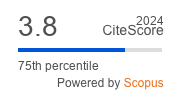Article | Open Access
The Influence of Space Standards on Housing Typologies: The Evolution of the Nuclear Family Dwelling in England
| Views: | 1940 | | | Downloads: | 2875 |
Abstract: This article explores the evolution of dwelling typologies in London, examining how regulations and standards have transformed housing layouts and indirectly informed personal and social interactions at home. Housing policy of the past century, as reflected through space standards, type plans, housing manuals, and reports, reveal a socio-political agenda of promoting nuclear family dwellings, traditionally a household of parents and their children. This article contributes to this discussion by exploring the contextual drivers, spatial reasoning, and evidence underpinning the decisions of housing reports such as the Tudor Walters Report (1918), the Dudley Report (1944), and the Parker Morris Report (1961). Changes in household structures can be seen through regulations: from multiple families sharing a house, to the separation of individual families into single homes, to prioritising the individual over the family unit. This article analyses how five historical moments in which typological shifts promoted nuclear family dwellings that have determined spatial hierarchies and family dynamics around cooking, eating, and socialising. Similarly, societal shifts in housing expectations, such as the changing perceptions of social status symbols, privacy, gender roles, and household dynamics have contributed to the spatial arrangement and layout of homes. By shedding light on the socio-technical transformations, this research highlights the need for innovative design solutions and evidence-based space standards to meet contemporary needs.
Keywords: design standards; housing typologies; nuclear family; post-war housing; space standards; terraced housing
Published:
© Lucia Alonso Aranda. This is an open access article distributed under the terms of the Creative Commons Attribution 4.0 license (http://creativecommons.org/licenses/by/4.0), which permits any use, distribution, and reproduction of the work without further permission provided the original author(s) and source are credited.


